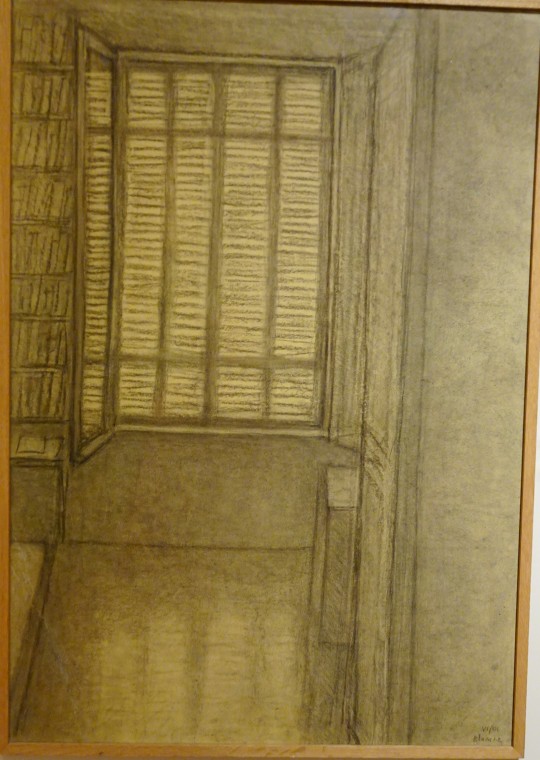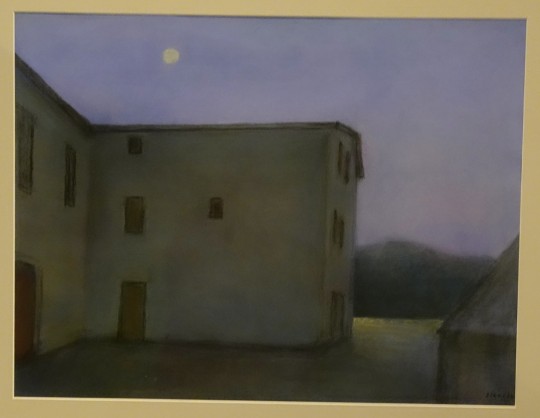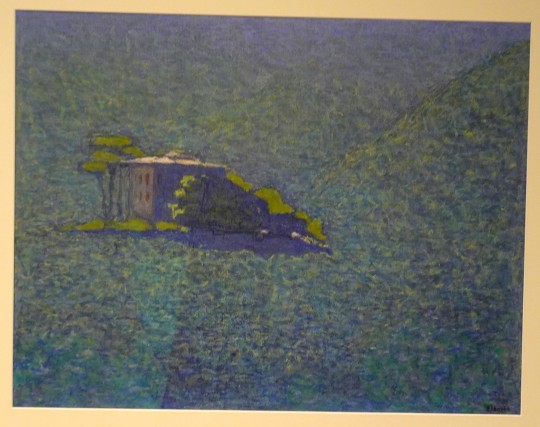#Aix-Marseille
Explore tagged Tumblr posts
Text

🇮🇹 Il nostro Presidente della Repubblica, Sergio Mattarella, ha ricevuto il dottorato Honoris Causa dall'università di Aix-Marseille, una delle principali istituzioni accademiche di Francia...




#presidente della repubblica#sergio mattarella#mattarella#dottorato#honoris causa#francia#università#Aix-Marseille
0 notes
Text

Le bout du monde
66 notes
·
View notes
Text

#aesthetic travel girl I am not#nor am I Charlie when it comes to packing#(please ignore the tea that looks like a drug stash and the inside out men’s pajama joggers)#but after 4 months in MENA I am heading to Marseille tomorrow afternoon#for a month in France#Marseille -> Aix en Provence -> Bayonne -> Paris#the archive hopping life#which would suck significantly less if I was not dragging two full size suitcases and a carry on backpack with me#but alas. I have accumulated shit#and also traveling from June to December nonstop in two very different regions of the world#culturally and temporally (and just seasons being seasons) means bringing way more clothes than I would for a just summer trip#not the stones#me stuff#travel
3 notes
·
View notes
Text





Marseille, Musée Regards de Provence. Une expo sur Jean-Pierre Blanche. Années algériennes et aixoises. De moins en moins d'humains, de plus en plus d'arbres...
"La Chambre, Pont-Rout"
"Mosquée"
"Orangerie de Pont-Rout"
"Les Bains d'Alger"
"Automne, Pont-Rout"
#marseille#musée regards de provence#expo#regards de provence#jean-pierre blanche#algérie#alger#aix#aix-en-provence#provence#pont-rout
7 notes
·
View notes
Text

Marché de Noël d’Aix en Provence, Décembre 2023
#marché de noel#marché#christmas food#christmasmarket#christmas market#france#mignon#cute#beautiful#voyage#view#aix en provence#marseille#south of france#french riviera#provence
6 notes
·
View notes
Text
The Somalian music belted out of the stereo as the taxi wound its way around the narrow streets at 20mph. I was on my was to East Croydon Station to take the train to Gatwick. The 5:34am train arrived on time and soon enough I was transported to Gatwick.
The airport was very busy, full of tourists heading out on new adventures and it’s not even peak season yet. With little time to spare, I made my way to the departures. “Mar-sell” called the boarding assistant, prompting everyone to board the plane. For the first time in a long time, I slept the duration of the 1.5 hour flight. In fact I slept through the safety announcement and only woke up when we were about to land.
“Bonjour” said the border control guard, as he stamped my passport, waving me into France. I exited the airport and the intensity of the light hit me. This is what Van Gogh was talking about, I felt as though I could see the world, but in reality I was looking at a bus terminal. I brought my €10 ticket to Aix-en-Provence and boarded the coach.
The coach drove through the Provence countryside to Aix-en-Provence. After 40 minutes, I arrived at my destination and strolled down the tree lined boulevard into the old town whilst listening to the cicadas. Then I arrived in town and everything was closed because it’s a Sunday!
1 note
·
View note
Link
The Aix-Marseille-Provence Metropolis is looking, for July-August, to recruit around sixty lifeguards.
The municipalities concerned: Aix-en-Provence, Berre-l'Étang, Bouc-Bel-Air, Cassis, Fuveau, Gardanne, Lambesc, Pertuis, Le Puy-Sainte-Réparade, Les Pennes-Mirabeau, Trets, Vitrolles and Venelles.
#life guards#sauveteurs#lifesavers#swimming pools#Aix-Marseille-Provence#France#news#via Radio Star#world news
0 notes
Text
I love this show, especially when the gay little russian spy show up in little outfits :))



Everytime I visit @quijicroix I end up drawing tmfu fanart fkkfkkkc weird. Anyway all the little comics are retellings of my favorite scene from the episodes :) with no liberties taken whatsoever haha I would never do that
PS : Was no one gonna tell me that my most high effort uncle fanart, where I made them eat at a restaurant from my hometown as an excuse to show off the food I grew up with that is specific to this region of france..... Is canon ?????? They actually went to the french riviera (and not like marseille or aix ?? Well they're not in Nice, but Canne is a 40min drive away so close enough) ???????? I was loosing my shit watching 'the girls from Nazarone affair' with quiji omg
Wdym an american show can name another french town other than Paris ? Incredible
#my blorbos from my beloved 60s spy show#and KGB mister spock as a treat kfkflf nimoy and shatner where great in this episode !!#illya kuryakin#napoleon solo#napollya#tmfu#tmfu tv#the man from uncle#illya kuryakin fanart#napoleon solo fanart#art#my art#digital art#sketch#comic#muncle
257 notes
·
View notes
Text

Academic Male Study (18th century).
Michel Francois Dandre-Bardon (1700-1785), French. oil/canvas. Musee des Beaux Arts. Marseille. He was a French history painter and etcher.
He was born in Aix-en-Provence, France. He signed his name Dandré-Bardon, or D. Bardon, because his uncle, Louis Bardon, made him his heir on condition that he continued the name of Bardon; but his real name was André, as the registers of the church of St. Madeleine testify.
(Don Bryson publication)
60 notes
·
View notes
Text






Marseille, Musée Regards de Provence. Une expo sur Jean-Pierre Blanche. Des paysages provençaux et nocturnes.
"La lumière de l'atelier"
"Plateau du Cengle à l'Amandier"
"Ferme n°1"
"Vauvenargues"
"Les derniers rayons"
"Vauvenargues"
#marseille#expo#jean-pierre blanche#musée regards de provence#regards de provence#arbre#provence#vauvenargues#aix#aix-en-provence#cengle#plateau du cengle#amandier
5 notes
·
View notes
Text
A little preview of Joe and Kaiser's trip to Provence!
A li'l snippet for you PO!! fans! Been a bit slower writing this fic but it's comin'. Enjoy!
Von Kaiser watched as Joe nibbled at half of a tarte tropézienne. The German had already finished his portion of the brioche treat, and the floral notes of the orange blossom cream that filled its center still lingered pleasantly upon his palate.
He had never been keen on desserts, but the little pastry was not too sweet and paired wonderfully with his coffee. He could honestly say he enjoyed it, but what brought him more happiness was seeing Joe seated across from him, able to indulge in a treat without being ill or overcome with panic.
They were seated outside of a pâtisserie in Nice that overlooked a bright, calm sea the color of a robin's egg. The weather had become warmer, and the city was much busier than Marseille or Aix-en-Provence, but Von Kaiser found a sense of safety from the extra warmth and the larger crowds. He felt more at home- more than he did in New York. The crowds of Nice were more like those he knew in Berlin: more leisurely and slower, comprising people who savored their solitary walks, in contrast to the ones of New York which were louder and more hurried, more chaotic.
Both men agreed that the long, comfortable moments of silence between them were some of the most treasurable. After all, they were halfway across the globe from the thousands of screaming spectators, the bells, and the calls of the referee, and they savored every moment of quiet they would have on their trip.
“I often forget how vast my country is,” Joe mused, cradling his warm mug and staring around himself in wonder. “Far away from Paris, all of these marvelous beaches, the countryside… it is all much more than just my city, non?"
Von Kaiser looked up from his newspaper and chuckled. There was also much more to his own sprawling country than lederhosen and die Bierhäuser of the South.
#glass joe#von kaiser#punch out#punch out wii#punchout#punch out!!#punch out!! wii#ao3 fanfic#punch out fanfic
8 notes
·
View notes
Text

Muscle Tono
This study in fruit flies finds a protein called Tono is key in myogenesis [muscle development]– Tono enables organelles of a muscle cell to mature and it senses mechanical forces, adapting gene expression [activity] to change how the cell responds
Read the published research article here
Image from work by Xu Zhang and Jerome Avellaneda, and colleagues
Aix Marseille University, CNRS, IBDM, Turing Centre for Living Systems, Parc Scientifique de Luminy, Marseille, France
Image originally published with a Creative Commons Attribution – NonCommercial – NoDerivs (CC BY-NC-ND 4.0)
Published in Current Biology, August 2024
You can also follow BPoD on Instagram, Twitter and Facebook
11 notes
·
View notes
Text


The origin of most meteorites finally revealed
An international team led by three researchers from the CNRS1, the European Southern Observatory (ESO, Europe), and Charles University (Czech Republic) has successfully demonstrated that 70% of all known meteorite falls originate from just three young asteroid families. These families were produced by three recent collisions that occurred in the main asteroid belt 5.8, 7.5, and about 40 million years ago. The team also revealed the sources of other types of meteorites; with this research, the origin of more than 90% of meteorites has now been identified. This discovery is detailed in three papers, a first published on 13 September 2024 in the journal Astronomy and Astrophysics, and two new papers to be published on 16 October 2024 in Nature.
An international team of researchers has shown that 70% of all known meteorite falls originate from three young asteroid families (Karin, Koronis and Massalia) formed by collisions in the main asteroid belt 5.8, 7.5 and about 40 million years ago. In particular, the Massalia family has been identified as the source of 37% of known meteorites.
While more than 70,000 meteorites are known, only 6% had been clearly identified by their composition (achondrites) as coming from the Moon, Mars, or Vesta, one of the largest asteroids in the main belt. The source of the other 94% of meteorites, the majority of which are ordinary chondrites2, had remained unidentified.
Why are these three young families the source of so many meteorites?
This can be explained by the life cycle of asteroid families. Young families are characterised by an abundance of small fragments left over from collisions. This abundance increases the risk of collisions between fragments and, coupled with their high mobility, their escape from the belt, possibly in the direction of Earth. The asteroid families produced by older collisions, on the other hand, are "depleted" sources of meteorites. The abundance of small fragments that once made them up has naturally eroded and finally disappeared after tens of millions of years of successive collisions and their dynamic evolution. Thus, Karin, Koronis and Massalia will inevitably coexist with new sources of meteorites from more recent collisions and eventually give way to them.
A method for tracing the family tree of meteorites and asteroids
This historic discovery was made possible by a telescopic survey of the composition of all the major asteroid families in the main belt, combined with state-of-the-art computer simulations of the collisional and dynamical evolution of these major families. This approach has been extended to all meteorite families, revealing the primary sources of the carbonaceous chondrites and achondrites, which come in addition to those from the Moon, Mars, and Vesta.
Thanks to this research, the origin of more than 90% of meteorites has now been identified. It has also enabled scientists to trace the origin of kilometre-sized asteroids (a size that threatens life on Earth). These objects are the focus of many space missions (NEAR Shoemaker, Hayabusa1, Chang'E 2, Hayabusa2, OSIRIS-Rex, DART, Hera, etc.). In particular, it appears that the asteroids Ryugu and Bennu, recently sampled by the Hayabusa2 (Japanese Aerospace Exploration Agency JAXA) and OSIRIS-REx (NASA) missions and studied in laboratories around the world, particularly in France, are derived from the same parent asteroid as the Polana family.
The origin of the remaining 10 per cent of known meteorites is still unknown. To remedy this, the team plans to continue their research, this time focusing on characterising all young families that were formed less than 50 million years ago.
From the Laboratory of Astrophysics of Marseille (Aix-Marseille Université/CNRS/CNES).
Meteorites consisting of silicates, representing approximately 80% of all known meteorites.
TOP IMAGE: El Médano 128 meteorite, an ordinary chondrite (group L), found in the Atacama desert in 2011 by a team of researchers from the Centre de recherche et d'enseignement des géosciences de l'environnement (CEREGE - Aix-Marseille Université/CNRS/INRAE/IRD) Credit © Jérôme Gattacceca, CNRS, CEREGE
LOWER IMAGE: Polarised transmitted light image of the ordinary chondrite (group H) San Juan 029, found in the Atacama Desert in 2008 by a team of researchers from CEREGE. Image width 3 mm. Credit © Jérôme Gattacceca, CNRS, CEREGE
8 notes
·
View notes
Text

A Jamming Framework for Soft Granular Materials
Experiments on soft granular materials have allowed researchers to derive a rheological description for these materials by extending an established framework valid for hard granular materials. [...] One outstanding challenge in the field of granular materials is to fully understand the jamming transition—the point at which a granular material flowing through a confined space becomes so tightly packed that it behaves as a solid. Physicists have investigated the dynamics of this transition theoretically and experimentally, but most studies have focused on systems made up of hard grains. Now Franco Tapia at Aix-Marseille University, France, and colleagues have performed a comprehensive series of experiments to extend the description of this transition to an aggregate of soft particles [1]. Understanding how soft granular materials flow might have implications in cancer research (see Viewpoint: Physics of Cancer Takes Shape).
Read more.
6 notes
·
View notes
Text
The US National Institute of Standards and Technology (NIST) is discussing plans to eliminate an entire team responsible for publishing and maintaining critical atomic measurement data in the coming weeks, as the Trump administration continues its efforts to reduce the US federal workforce, according to a March 18 email sent to dozens of outside scientists. The data in question underpins advanced scientific research around the world in areas like semiconductor manufacturing and nuclear fusion.
“We were recently informed that unless there is a major change in the Federal Government reorganization plans, the whole Atomic Spectroscopy Group will be laid off in a few weeks, in particular, since our work is not considered to be statutorily essential for the NIST mission,” Yuri Ralchenko, the group's leader, wrote in the email, which was seen by WIRED.
Ralchenko noted that atomic spectroscopy has been used to discover many new exoplanets and develop powerful new diagnostic techniques, among other applications. “Unfortunately, the story of atomic spectroscopy at NIST is coming to an end,” he wrote.
In response to a request for comment from WIRED, Ralchenko said he wasn’t permitted to speak about budget and management issues and referred questions to NIST’s public affairs department. NIST and its parent agency, the Department of Commerce, did not respond to requests for comment.
The Atomic Spectroscopy Group studies how atoms absorb or emit light, allowing researchers to identify the elements present in a given sample. It then collects and updates those calculations in the Atomic Spectra Database, a catalog of industry-leading spectroscopy information and measurements that plays a crucial role in fields like astronomy, astrophysics, and medicine. In a blog post published last week highlighting the importance of the database, NIST said it receives an average of 70,000 search requests worldwide each month.
It is “really difficult to overestimate” the importance of this data, says Evgeny Stambulchik, a senior staff research scientist at the Weizmann Institute of Science in Israel who started a petition to gather signatures from other researchers and members of the public who oppose the cuts to the atomic spectroscopy team. The petition currently has over 1,700 signatures.
Stambulchik, whose speciality is plasma spectroscopy, says that atomic spectroscopy is essentially the only tool that can be used to interpret remote objects in space, like those observed by the powerful James Webb telescope. It’s also basically the only tool for investigating “matter at temperatures reaching tens of million degrees,” he adds, such as inside a nuclear fusion reactor.
Another plasma physicist at a US institution who asked to remain anonymous because they are not authorized to speak to the media said they use this data daily to build reliable models for designing future fusion reactors. “Losing this trusted data source would hinder private fusion companies," they explain.
The US scientist says the data provided by NIST’s Atomic Spectroscopy Group is useful to researchers and engineers across multiple fields. “The kind of carefully curated data this group provided underpins reliable systems like GPS and lithography,” they say. “It is this kind of rigorous science and engineering that keeps our bridges up and our power on. This is not ‘move fast and break things.’”
The Atomic Spectra Database is used by scientists around the world, putting the United States at the center of a wide range of scientific research. “It's no exaggeration to say that I never go a day without logging on to ASD to search for atomic or spectroscopic data,” says Annette Calisti, Senior Researcher at Aix-Marseille University in France.
The measurements provided by NIST’s group “are essential for numerous fields of science and industry: astronomy, astrophysics, medicine, Martian geology, lithography, nonproliferation,” Calisti says. “Losing this leadership by closing this group would be very damaging to the United States.”
Ending the atomic spectroscopy program at NIST “means that the United States would shrink its presence on the international stage, leaving room for someone else to take our place,” says California Representative Zoe Lofgren, the top Democrat on the Republican-controlled House Science Committee. “This program is one of hundreds or even thousands at NIST alone with far-reaching benefits to our national and economic security. The Trump administration must consult with Congress and scientific experts before lopping off more of our scientific capabilities.”
Lofgren tells WIRED that Congress has had little insight into how these cuts are being made at NIST. “We have no idea who is choosing to cut a statutorily mandated program or if they even understand the consequences,” she says. The legal statute passed by Congress outlining NIST’s work specifically notes that the agency is responsible for determining “the atomic and molecular structure of matter” through “analysis of spectra and other methods,” which is precisely what the Atomic Spectroscopy Group does.
The decision to shutter the Atomic Spectroscopy Group is part of wider planned layoffs and cost-cutting measures that have roiled NIST since President Donald Trump retook the White House and instructed Elon Musk’s Department of Government Efficiency (DOGE) to slash spending.
Initially established in 1901, NIST is responsible for creating and maintaining standards in everything from quantum computing to manufacturing. Despite its broad mandate, the agency’s budget was only $1.5 billion, approximately 0.02 percent of federal spending overall for fiscal year 2025.
One current NIST employee tells WIRED that a significant amount of scientific work has effectively stopped at the agency, due to spending limits imposed by the Trump administration that have made it difficult to get approval to purchase scientific equipment. It feels like “instead of just cancelling funding they're choking off spending” and will try to end the year with money left over so officials “can take back and use it to justify rounds of budget cuts," says the staffer.
In anticipation of the layoffs to the Atomic Spectroscopy Group, Ralchenko wrote in the email last week that his team was “currently discussing” mirroring NIST’s data and online tools at other institutions or universities so that they “will not become a slowly dying burden but rather continue to evolve and improve.”
2 notes
·
View notes







